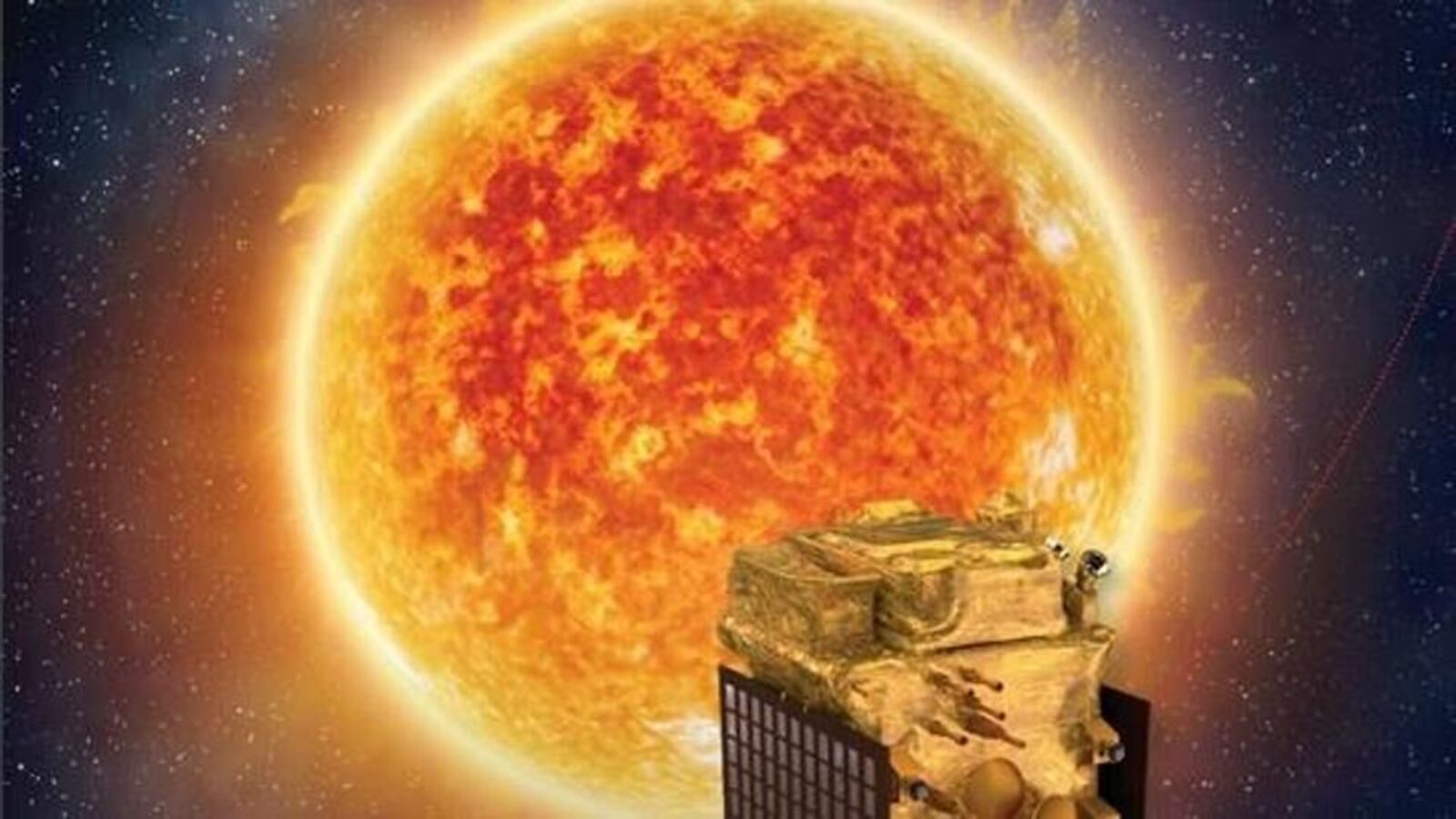India’s solar mission spacecraft, Aditya-L1, made a groundbreaking discovery by capturing the initial burst of high-energy X-rays from solar flares on Tuesday.
The Indian Space Research Organization (ISRO) announced this significant achievement and shared details of the milestone. According to ISRO, the High Energy L1 Orbiting X-ray Spectrometer (HEL1OS) onboard the Aditya-L1 spacecraft successfully recorded the impulsive phase of solar flares.
HEL1OS, a state-of-the-art instrument designed to monitor the Sun’s high-energy X-ray activity with precision timing and high-resolution spectra, is currently undergoing fine-tuning since its commissioning on October 27.
What is a solar flare?
A solar flare is a sudden brightening of the solar atmosphere. Flares produce enhanced emission in all wavelengths across the electromagnetic spectrum, including radio, optical, UV, soft X-rays, hard X-rays, and gamma-rays.
HEL1OS data will help researchers study explosive energy release and electron acceleration during impulsive phases of solar flares.
“The instrument is set to monitor the sun’s high-energy X-ray activity with fast timing and high-resolution spectra,” ISRO said on X.
In a noteworthy achievement, Aditya-L1 ventured beyond the Earth’s sphere of influence in October. ISRO highlighted that this marks the second occasion where they have successfully sent a spacecraft beyond the Earth’s sphere of influence, with the first being the Mars Orbiter Mission.
Aditya-L1 mission
India’s maiden sun mission was launched on September 2 from the Satish Dhawan Space Centre (SDSC) in Sriharikota.
It is equipped with seven scientific payloads developed indigenously by the ISRO and various national research laboratories, including the Bengaluru-based Indian Institute of Astrophysics (IIA) and the Inter-University Centre for Astronomy and Astrophysics (IUCAA) in Pune.
These payloads are designed to study the photosphere, chromosphere, and the outermost layers of the Sun, known as the corona, using electromagnetic, particle, and magnetic field detectors.
Positioned at the advantageous L1 point, four of these payloads will directly observe the Sun, while the remaining three will conduct in-situ studies of particles and fields at Lagrange point L1.
(With inputs from ANI)














